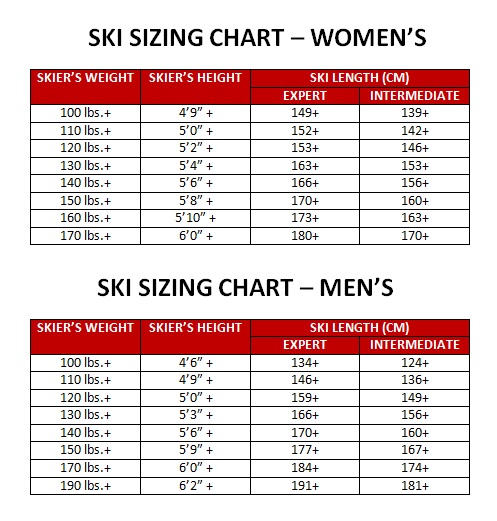Ready to ditch the car and embrace the crisp winter air? Cross-country skiing is an amazing way to stay active, explore snowy landscapes, and build some serious endurance. But before you hit the trails, one crucial decision stands between you and a smooth, enjoyable glide: choosing the right ski length.
Getting the correct cross-country ski size is like finding the perfect pair of running shoes. Too short, and you'll feel like you're constantly scrambling. Too long, and you'll be wrestling with clunky, unwieldy planks. Properly sized skis maximize your efficiency, making gliding easier and allowing you to cover more ground with less effort. This translates to more fun, less fatigue, and a deeper connection with the winter wonderland around you.
Historically, cross-country skis were significantly longer, often reaching well above the skier's head. As ski technology and techniques evolved, skis became shorter and more specialized for different skiing styles. Today, choosing the correct ski length involves considering factors like your height, weight, skiing ability, and intended terrain.
The primary issue with incorrect ski length is inefficiency. Skis that are too long can be difficult to control and maneuver, especially for beginners. Overly long skis also make it harder to develop proper technique, hindering progress and potentially leading to frustration. Conversely, skis that are too short won't provide adequate glide or stability, especially in varying snow conditions.
Finding the right ski length isn't about following a rigid formula. It's about understanding the interplay between your individual characteristics and your skiing goals. Factors such as your weight influence the amount of pressure exerted on the ski, affecting its flex and performance. Your skiing style, whether classic or skate skiing, also plays a key role, as each technique requires different ski characteristics.
Classic cross-country skis are typically sized to reach somewhere between your wrist and the base of your palm when you hold your arm straight up. Skate skis are generally shorter, falling between your chin and forehead when held vertically. Your weight can also influence the recommended length; heavier skiers might benefit from slightly longer skis for added stability.
Benefit 1: Improved Efficiency: Correctly sized skis allow for a more efficient transfer of energy, meaning you'll glide further with each stride and expend less energy overall. This translates to longer, more enjoyable ski tours without feeling completely wiped out.
Benefit 2: Enhanced Control: Properly sized skis provide better control and maneuverability, especially on challenging terrain or in varying snow conditions. This increased control boosts your confidence and reduces the risk of falls or injuries.
Benefit 3: Faster Learning Curve: With skis that are the right length, you'll find it easier to learn proper technique and progress more quickly. This can be especially important for beginners who are just starting to develop their skiing skills.
Action Plan: First, determine your skiing style (classic or skate). Then, consult a ski sizing chart provided by a reputable ski manufacturer or retailer. These charts typically take into account your height, weight, and skiing ability. Consider your experience level and typical terrain. If you're unsure, err on the slightly shorter side, especially if you're a beginner.
Advantages and Disadvantages of Different Ski Lengths
| Ski Length | Advantages | Disadvantages |
|---|---|---|
| Too Long | Greater stability at high speeds (for advanced skiers) | Difficult to control, harder to turn, increased fatigue |
| Too Short | Easy to maneuver, good for beginners learning basic techniques | Reduced glide, less stability in varying snow conditions |
| Just Right | Optimal balance of glide, control, and maneuverability, efficient energy transfer | Requires careful consideration of individual factors |
Best Practice 1: Consult with a Ski Expert: Visit a local ski shop and talk to an experienced salesperson. They can provide personalized recommendations based on your individual needs and goals.
Best Practice 2: Consider Your Terrain: If you primarily ski on flat terrain, slightly shorter skis might be suitable. For hilly terrain, slightly longer skis can provide added stability.
FAQ 1: Can I use the same skis for classic and skate skiing? Ideally, you should have separate skis for each technique, as they have different design characteristics.
FAQ 2: How do I know if my skis are too long? If you find it difficult to control your skis, especially when turning, they might be too long.
Tips and Tricks: Test different ski lengths if possible before making a purchase. Consider renting skis to experiment with different sizes and find what works best for you. Pay attention to how the skis feel in different snow conditions.
Choosing the correct cross-country ski length is a fundamental step towards enjoying this fantastic winter activity. It's about more than just finding a number on a chart; it's about understanding how your individual characteristics interact with the equipment to create a seamless, enjoyable skiing experience. By taking the time to research, consult with experts, and consider your own skiing style, you'll be well on your way to gliding smoothly through snowy landscapes and reaping the numerous benefits of this invigorating sport. Don't let ill-fitting skis hold you back from exploring the winter wonderland that awaits! Get out there and experience the joy of cross-country skiing with the perfect pair of skis beneath your feet.
Finding your perfect room in central nj
Turning spare rooms into sanctuaries guest bedroom inspiration
Diving deep into the world of x men self insert fanfiction
Cross Country Ski Boot Size Chart - Khao Tick On
Xc Ski Pole Size Chart - Khao Tick On
Nordic Ski Pole Size Chart - Khao Tick On
How Long Should X Country Skis Be at David Scheele blog - Khao Tick On
Ski Pole Size Conversion Chart - Khao Tick On
Ski Board Size Chart - Khao Tick On
Snow Ski Size Chart - Khao Tick On
Proper Ski Length Chart - Khao Tick On
Sizing Of Cross Country Skis at Robert Hennig blog - Khao Tick On
Xc Ski Pole Size Chart - Khao Tick On









